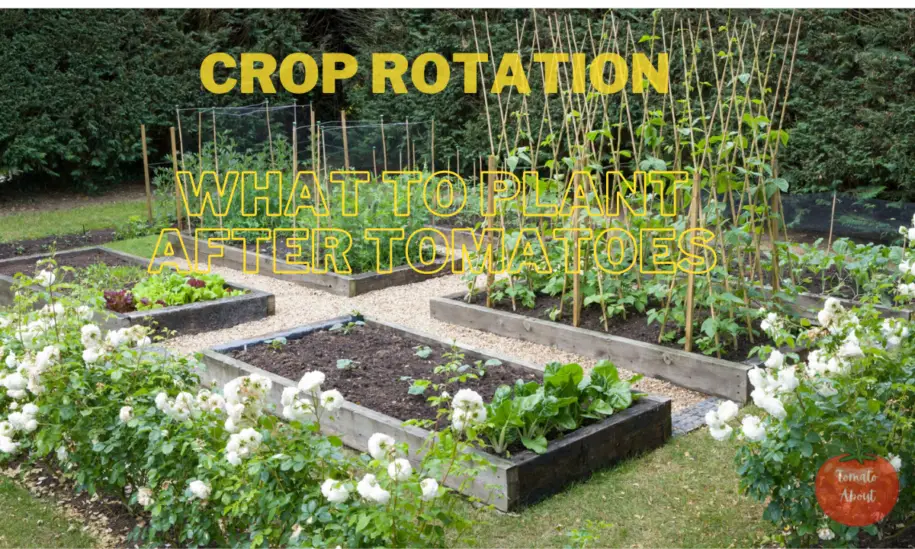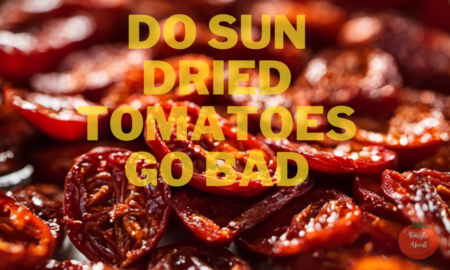Key Takeaways
- Rotate crops to replenish soil nutrients and prevent disease buildup.
- Legumes like beans and peas are ideal rotation crops for nitrogen-hungry tomatoes.
- Rotate between plant families with different nutrient needs and vulnerabilities.
- Allow 2-4 years between successive tomato plantings to disrupt disease cycles.
- Avoid planting tomatoes or other nightshades in the same spot multiple years in a row.
Are you looking forward to biting into a juicy, vine-ripened tomato every summer? But disappointment strikes when your tomato plants fail to thrive or produce delicious fruit. What happened? Chances are, you planted them in the same location year after year. Continuous tomato cropping in one spot diminishes soil nutrients and enables diseases to accumulate over time. The solution? Thoughtful crop rotation.
Rotating vegetable crops restores nutrients and prevents disease buildup in your garden soil. With a bit of planning, you can implement a simple yet effective crop rotation schedule. Follow these guidelines, and you’ll enjoy vigorous tomato plants and bountiful harvests.
Why Rotate Crops After Tomatoes?
Tomatoes rapidly deplete soil nutrients as they grow. They thrive in nitrogen-rich soil and absorb huge amounts through their extensive root systems. Tomato plants also accumulate certain pests and diseases in the surrounding soil over successive seasons. Fungal pathogens like early blight overwinter in crop residue in the same location. Nematodes accumulate in the undisturbed soil. By growing tomatoes in the same ground year after year, you create the ideal environment for weakened plants, poor fruit production, and disease outbreaks.
Crop rotation avoids these issues by interrupting disease cycles and replenishing nutrients. It works by shifting plant families—groups that share nutritional needs and disease vulnerabilities—to different parts of your garden from season to season. Here are some key benefits of crop rotation:
- Replenishes nitrogen: Tomatoes, along with potatoes, peppers, and eggplants, belong to the nightshade family. After growing these nitrogen-hungry crops, legumes add nitrogen back into the soil through a symbiotic relationship with nitrogen-fixing bacteria. Good legume rotation crops include peas, beans, and clover.
- Prevents disease buildup: Rotation crops unrelated to tomatoes help disrupt disease cycles. For example, brassicas like cabbage and broccoli won’t spread common tomato pathogens.
- Improves soil structure: Alternating deep and shallow-rooted plants creates soil channels that improve drainage and aeration.
- Deters pests: Changing crop locations disrupt egg and larval cycles of tomato pests like hornworms.
Why Rotate Tomato Crops?
There are some good reasons to rotate tomato crops with other plants in your garden on a regular schedule. According to Wikipedia, growing the same plant in the same location over time will deplete nutrients in the soil.
Crop rotation helps to restore nutrients to the soil, improving the yields of tomatoes and other plants. For example, legumes restore nitrogen to the soil, due to the nitrogen-fixing bacteria in their root nodules.
According to the University of Maryland Extension, crop rotation also helps to prevent diseases in your garden. For example, some diseases that affect tomatoes (such as early or late blight) will not affect legumes.
Thus, crop rotation helps to slow the spread of these diseases, or eliminates them entirely.
The University of Minnesota also suggests a good alternative: using containers (pots, grow bags, etc.) to “quarantine” disease-prone plants. For example, heirloom tomatoes have not been bred to have the disease resistance that some hybrid varieties enjoy.
What Is A Good Crop To Rotate With Tomatoes?
If you want a crop to rotate with tomatoes, any legume is a good choice. Legumes like beans, peas, and clover make excellent rotation crops for tomatoes. As nitrogen-fixing plants, they restore depleted nitrogen to the soil after heavy-feeding tomatoes. Their roots also aerate the soil and help break up compacted ground. Plus, legumes don’t share common diseases with tomatoes, so they disrupt disease cycles.
Here are some of the best legume crops to rotate with tomatoes:
- Beans: Bush or pole beans enrich the soil with nitrogen. Choose disease-resistant varieties like Jade bush beans or Blue Lake pole beans.
- Peas: Plant English or snap peas in spring 2-3 weeks before the last frost. Pea vines add lots of organic matter.
- Clover: Red clover is sown as a cover crop to fix nitrogen. Till under plants before they set seed.
- Alfalfa: This perennial’s long taproot draws up nutrients from deep in the soil. Cut it frequently to prevent seeding.
- Peanuts: Peanuts grow well after tomatoes. Their underground pods fix nitrogen.
Legumes are ideal rotation crops before tomatoes. Their ability to add nitrogen benefits heavy-feeding nightshades.
5 Good Crops to Rotate with Tomatoes
While legumes are great for rotating with tomatoes, they aren’t your only option. For a healthy multi-year rotation, also incorporate these crops from other families:
1. Broccoli
A member of the nutrient-hungry brassica family, broccoli thrives when planted after nitrogen-fixing legumes. Its shallow roots improve aeration near the soil surface. Choose disease-resistant varieties like Belstar, Gypsy, or Arcadia.
2. Carrots
The sturdy taproots of carrots help break up compacted soil after tomatoes or other sprawling crops. Carrots need deep, loose soil amended with compost to thrive. Good varieties include Danvers, Scarlet Nantes, and Rainbow Blend.
3. Beets
Another root crop, beets grow best when rotated into a bed previously planted with shallow-rooted crops. Their penetrating taproots improve drainage and aeration. Red Ace and Touchstone Gold produce reliably.
4. Cucumbers
Rotate cucumbers after heavy feeders like tomatoes and broccoli. Their sprawling vines occupy vertical space, unlike compact tomatoes. Plant diseased-resistant varieties like Diva, Marketmore 76, or Sweet Slice.
5. Onions
Onions share few diseases with tomatoes, making them ideal rotation crops. Their shallow roots don’t compete with deep-rooted tomatoes. Red Wing and Sweet Spanish grow well in most regions.
Rotating these crops with legumes and leaving some beds fallow will provide a balanced crop rotation.
How to Practice Crop Rotation
The simplest rule of thumb for crop rotation is to grow an above-ground crop followed by a below-ground crop. But an even better approach is to rotate between four key crop groups that benefit most from rotation:
- Solanaceous crops: Tomatoes, potatoes, peppers, eggplants
- Cruciferous crops: Cabbages, cauliflower, broccoli, Brussels sprouts, kale
- Root crops: Beets, carrots, parsnips, salsify, turnips
- Leguminous crops: Beans, peas
Cucurbit crops like cucumbers, squash, and melons can generally be planted anywhere in the rotation schedule. The same goes for greens like spinach and Swiss chard. Just avoid pairing them with known companion plants.
The key to successful crop rotation is advance planning. Decide what you will grow and where following the crop groups above to fully utilize soil nutrients. Also, factor in planting seasons – there’s no sense trying to grow frost-sensitive tomatoes in winter, even if carrots just completed a season in that bed.
Here are some crop rotation tips:
- Map out beds and schedule crop rotations for the whole garden over multiple years.
- Plant heavy-feeding crops like tomatoes after soil-enriching legumes.
- Alternate shallow roots with deep taproots to improve soil structure.
- Rotate by planting family rather than individual crops.
- Don’t follow one crop with another from the same plant family.
- Allow as many years as possible between repeat plantings.
- Grow cover crops like buckwheat or clover to enrich resting beds.
How Often Should You Rotate Tomato Crops?
Most gardeners recommend rotating tomatoes to a different area every 1-3 years. A longer rotation of at least 3-4 years works best for preventing disease. Here are some general guidelines based on climate:
- Cool climates: 2-3 year rotation
- Warm climates: 3-4 year rotation
- Hot, humid climates: 4-year or longer rotation
If you don’t have enough space for a 3-4 year rotation, you can stretch it to 2 years. Just watch closely for any disease symptoms. Containing plants in pots or raised beds also limits disease spread.
No matter your climate, never grow tomatoes or related crops in the same spot two years in a row. This allows time for pathogens to die back before tomatoes return. Extending time between tomato plantings reduces disease pressure season after season.
2-Year Crop Rotation Plan (for Tomatoes)
A 2-year crop rotation plan for tomatoes is useful if you do not have much space in your garden. In a small space, it may not be practical to split the garden into 3 or more sections for crop rotation.
In that case, plant tomatoes in the first year, and a legume in the second year. Rotate in this manner every other year. The legumes will help to restore nitrogen to the soil in alternating years.
Here is what the 2-year crop rotation plan would look like:
| Year 1 | Year 2 |
|---|---|
| Tomatoes | Legumes |
| Legumes | Tomatoes |
3-Year Crop Rotation Plan (for Tomatoes)
A 3 year crop rotation plan is similar to the 2 year plan, in that it includes one tomato section and one legume section. However, you also add a third unplanted section to your plot.
Leaving a section of the garden unplanted allows the soil to “rest” for a year since there are no crops taking up nutrients for growth. You can then use compost or aged manure to restore nutrients and organic material to the unplanted section.
Be sure to also mulch this unplanted section, or you may get unwelcome weeds!
Here is what the 3 year crop rotation plan would look like:
| Year 1 | Year 2 | Year 3 |
|---|---|---|
| Tomatoes | Legumes | Unplanted |
| Unplanted | Tomatoes | Legumes |
| Legumes | Unplanted | Tomatoes |
4 Year Crop Rotation Plan (for Tomatoes)
A 4-year crop rotation plan is a bit different than the previous plans. In this plan, you rotate between four different groups of plants in your garden:
- Tomatoes
- Legumes
- Brassicas
- Root crops
This leaves even more time between plantings of tomatoes. As a result, diseases and pests that affect tomatoes will have a lower chance of surviving in the soil until the next tomato crop.
The variety of crops planted will also help to balance out the nutrient demands on the soil over time. Here is what the 4-year crop rotation plan would look like:
| Year 1 | Year 2 | Year 3 | Year 4 |
|---|---|---|---|
| Tomatoes | Root crops | Brassicas | Legumes |
| Legumes | Tomatoes | Root crops | Brassicas |
| Brassicas | Legumes | Tomatoes | Root crops |
| Root crops | Brassicas | Legumes | Tomatoes |
5 Year Crop Rotation Plan (for Tomatoes)
A 5-year crop rotation plan is similar to the 4-year plan, except that it adds a fifth unplanted section. This allows the soil to rest for an extra year, giving tomato diseases more time to die out.
Here is what the 5-year crop rotation plan would look like:
| Year 1 | Year 2 | Year 3 | Year 4 | Year 5 |
|---|---|---|---|---|
| Tomatoes | Legumes | Brassicas | Root crops | Unplanted |
| Unplanted | Tomatoes | Legumes | Brassicas | Root crops |
| Root crops | Unplanted | Tomatoes | Legumes | Brassicas |
| Brassicas | Root crops | Unplanted | Tomatoes | Legumes |
| Legumes | Brassicas | Root crops | Unplanted | Tomatoes |
It is helpful to keep track of your crop rotation plans with a journal, so you know what to plant each year.
Can I Plant Tomatoes in the Same Place as Last Year?
It’s definitely possible to plant tomatoes in the same spot every year. However, it’s not the best practice for optimal harvests.
Repeatedly growing tomatoes in one area allows diseases and pests to accumulate over time. Fungal pathogens like Verticillium wilt, Fusarium wilt, and tobacco mosaic virus persist in the undisturbed soil for many years. Pests like hornworms and nematodes also build up substantial populations that thrive on continuous tomato crops.
By planting tomatoes in different beds each year, you prevent the devastating loss of plants and yield that occurs when diseases run rampant. Crop rotation breaks up disease and pest cycles by shifting tomatoes around the garden.
If you must plant tomatoes in the same bed as last year, here are a few tips:
- Solarize the soil by moistening, covering it with plastic, and leaving for 6-8 weeks to kill pathogens with heat.
- Choose tomato varieties grafted onto disease-resistant rootstock.
- Amend soil with aged compost to increase beneficial microbes that outcompete disease.
- Disinfect tools and stakes before use to avoid spreading disease.
- Remove and destroy all crop debris immediately after harvest to eliminate inoculum.
- Monitor closely for disease symptoms and remove any affected plants promptly.
While continuous cropping is possible, your best bet for thriving tomato plants is rotating their location every 2-4 years.
What Not To Plant After Tomatoes
You should not plant any crops in the nightshade family directly after tomatoes. Nightshades include tomatoes, potatoes, peppers, and eggplants.
First, nightshades have similar nutrient requirements, eventually depleting soil nutrients without heavy fertilization.
Also, nightshades share some common diseases. For example, early blight and late blight affect tomatoes, potatoes, peppers, and eggplants. Rotating these plants spreads diseases between them.
Conclusion
Planning and implementing a crop rotation schedule takes diligence. But it pays big dividends in the form of thriving, robust vegetable plants and bountiful harvests.
Make crop rotation even more powerful by combining it with other techniques like cover cropping, mulching, and regular compost applications. Follow these science-based practices, and your tomatoes will surely flourish and delight your taste buds!
For more tips on growing a productive vegetable garden, visit tomatoabout.com. Happy gardening!



